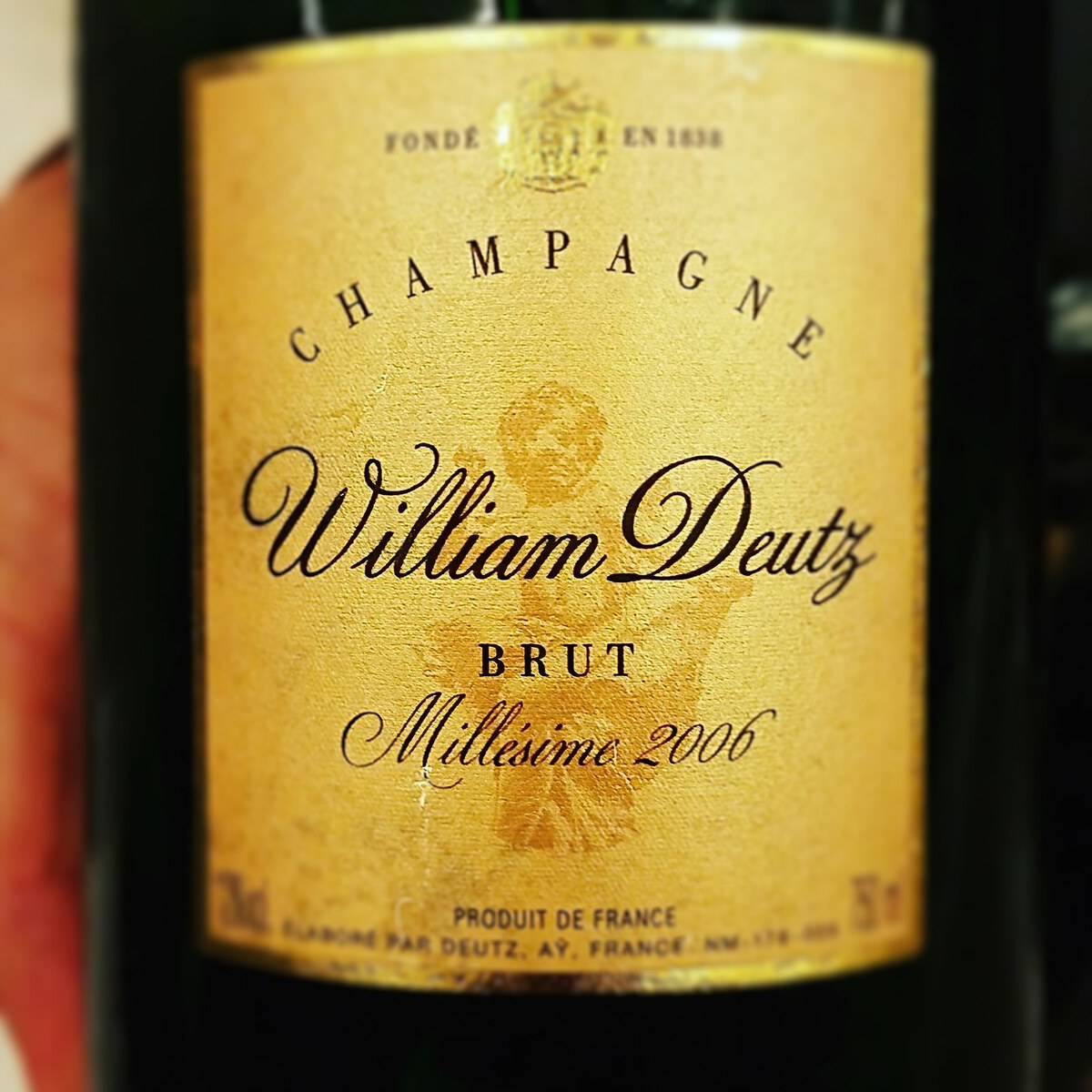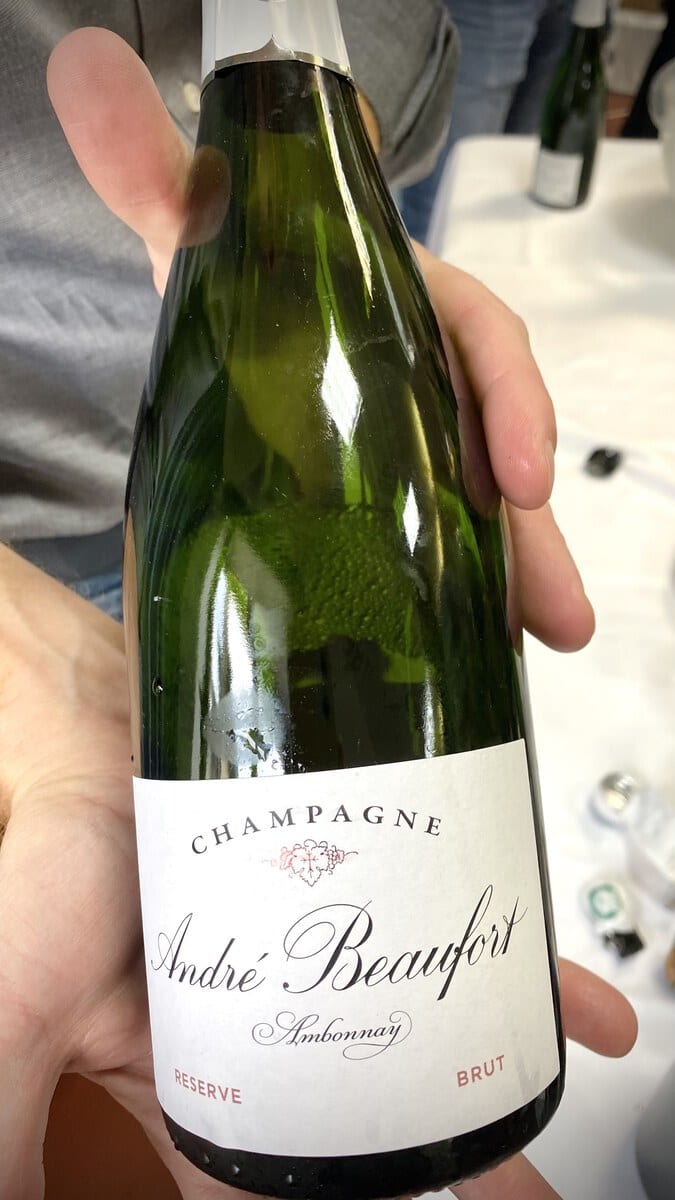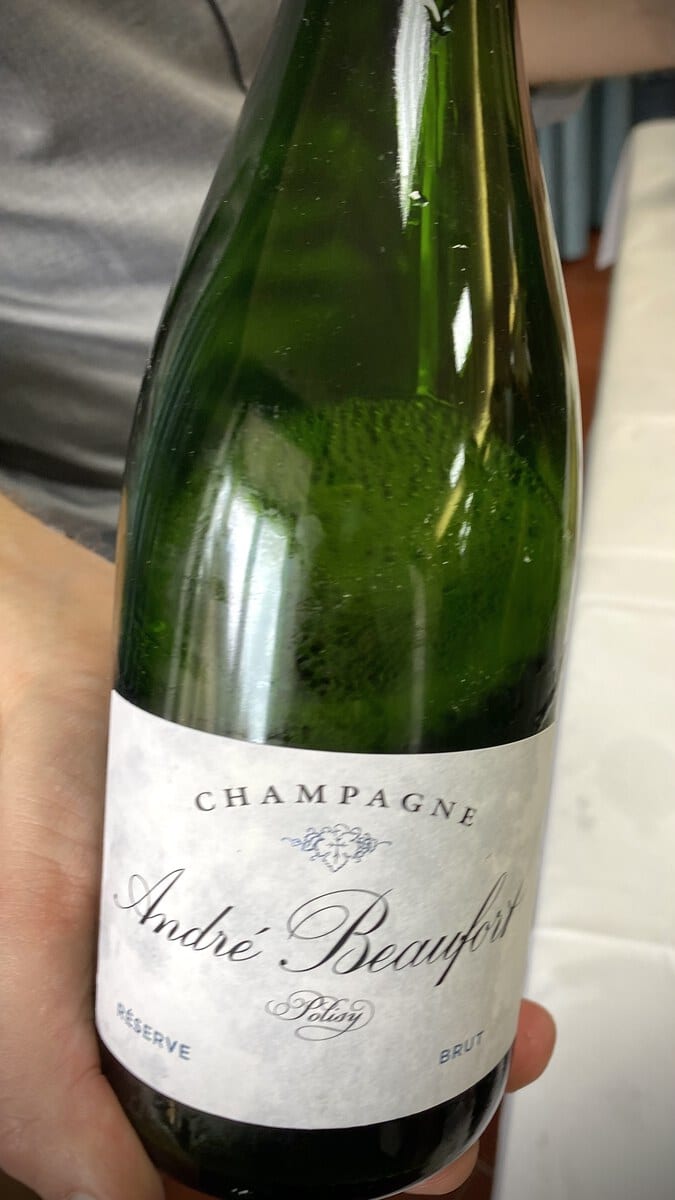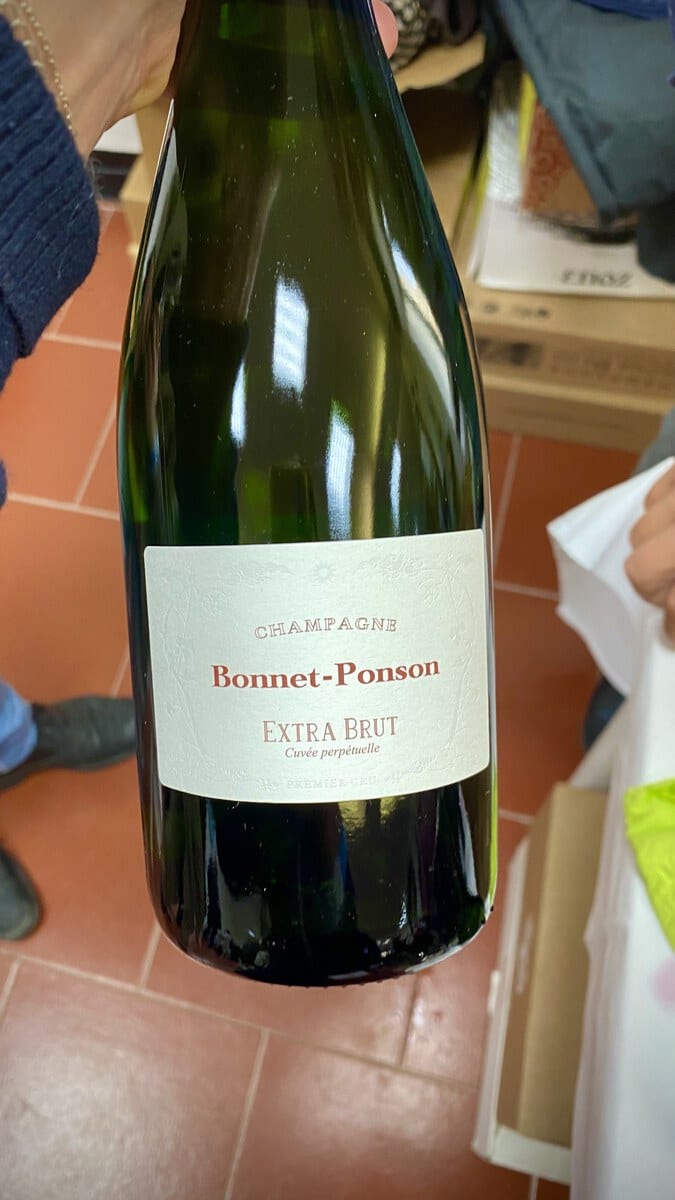William Deutz "Brut" 2006
Blend of Pinot noir / Chardonnay / Pinot MeunierRich and aromatic. Candied lemons, aromatic herbs, mineral.
Tasting Notes
The 2006 William Deutz Brut spends 100 months on lees in bottle before desgorgement (in October 2015).
Ripe, concentrated, very aromatic notes.
Citrus fruit zest, candied lemons and aromatic herbs. This Champagne also shows some very attractive minerality.
The palate is full-bodied, powerful and rich.
The finish is persistent and elegant.

|
|
William Deutz |
|
|
Brut |
|
|
White & Sparkling - Traditional Method |
|
|
France |
|
|
Champagne |
|
|
Pinot noir, Chardonnay, Pinot Meunier |
|
|
2006 |
|
|
How it's made
The wine spent 100 months on the lees in bottle before disgorgement (October 2015).
Learn more
Pinot noir
Red wine grape variety
Pinot noir is a type of red wine grape that belongs to the Vitis vinifera genus. It’s also probable that the name refers to wines produced mainly from Pinot noir grapes. The name comes from the words “pine” and “black” in French. The name pine refers to the grape variety’s tightly clustered, pine cone-shaped fruit bunches.
Link to here... | Derived from 'Pinot noir' on WikipediaChardonnay
Green-skinned grape variety used in wine production
Chardonnay is a grape variety with a green skin that is used to make white wine. The grape variety originated in eastern France’s Burgundy wine region, but it is now grown all over the world, from England to New Zealand. Growing Chardonnay is seen as a rite of passage for new and emerging wine regions, as well as an easy entry into the international wine market.
Link to here... | Derived from 'Chardonnay' on WikipediaPinot Meunier
Wine making grape
Pinot Meunier, also known as Meunier or Schwarzriesling, is a black wine grape variety best known for being one of the three main varieties used in the manufacture of Champagne. Until recently, Champagne producers largely ignored Pinot Meunier, choosing to focus on the use of other noble varieties, but Pinot Meunier is now gaining popularity for the body and richness it adds to Champagne. Pinot Meunier accounts for about one-third of all Champagne grapes planted. It’s a chimeric Pinot mutation in which the inner cell layers are made up of a Pinot genotype that’s identical to Pinot noir or Pinot gris, but the outer, epidermal, layer is made up of a mutant, distinct genotype. The name Pinot Meunier comes from the flour-like dusty white down on the underside of its leaves, which was first mentioned in the 16th century.
Link to here... | Derived from 'Pinot Meunier' on WikipediaChampagne
Champagne is a sparkling wine from France. While the word Champagne can be used to refer to any sparkling wine, it is illegal in the EU and some countries to label any product Champagne unless it comes from the Champagne wine region of France and is made according to the appellation’s regulations. This alcoholic beverage is made from particular grape varieties grown in the Champagne region, according to rules that include, among other things, specific vineyard practices, grape sourcing exclusively from specified locations within the Champagne region, specific grape-pressing methods, and secondary fermentation of the wine in the bottle to cause carbonation.
Link to here...Wines Related To Champagne
André Beaufort "Ambonnay"
Complex & full. Yogurt & candied citrus fruit.
André Beaufort "Polisy" 2018
Toasty & refreshing. Yogurt & toasted almonds.
Bonnet-Ponson "Cuvée perpétuelle - Extra Brut"
Fragrant & evolved. Candied fruit & toasted almond.
Traditional method
Traditional Method is one of the ways winemakers produce sparkling wines. It’s also known as Classical Method, Méthod Classique, Champenoise Method or Méthode Champenoise.
This wine making process is long and laborious but results in some of the most celebrated wines in the world. Traditional method is used to produce Champagne in France, Franciacorta and Trento DOC in Italy, Cava in Spain….
Read more about Traditional Method on my “Learn” pages.
Link to here...Lees (fermentation)
Deposits of residual yeast and other particles in wine-making
In the wine world “lees” is the fancy name for dead, decomposed yeast mainly, and some other particles, that are left in the bottle after fermentation.
The lees are extremely important in the process of winemaking. The yeast decomposition, known in the wine world with the name of autolysis, is responsible for the development of those bready, fragrant, buttery notes we all love in great sparkling wines.
Link to here...



